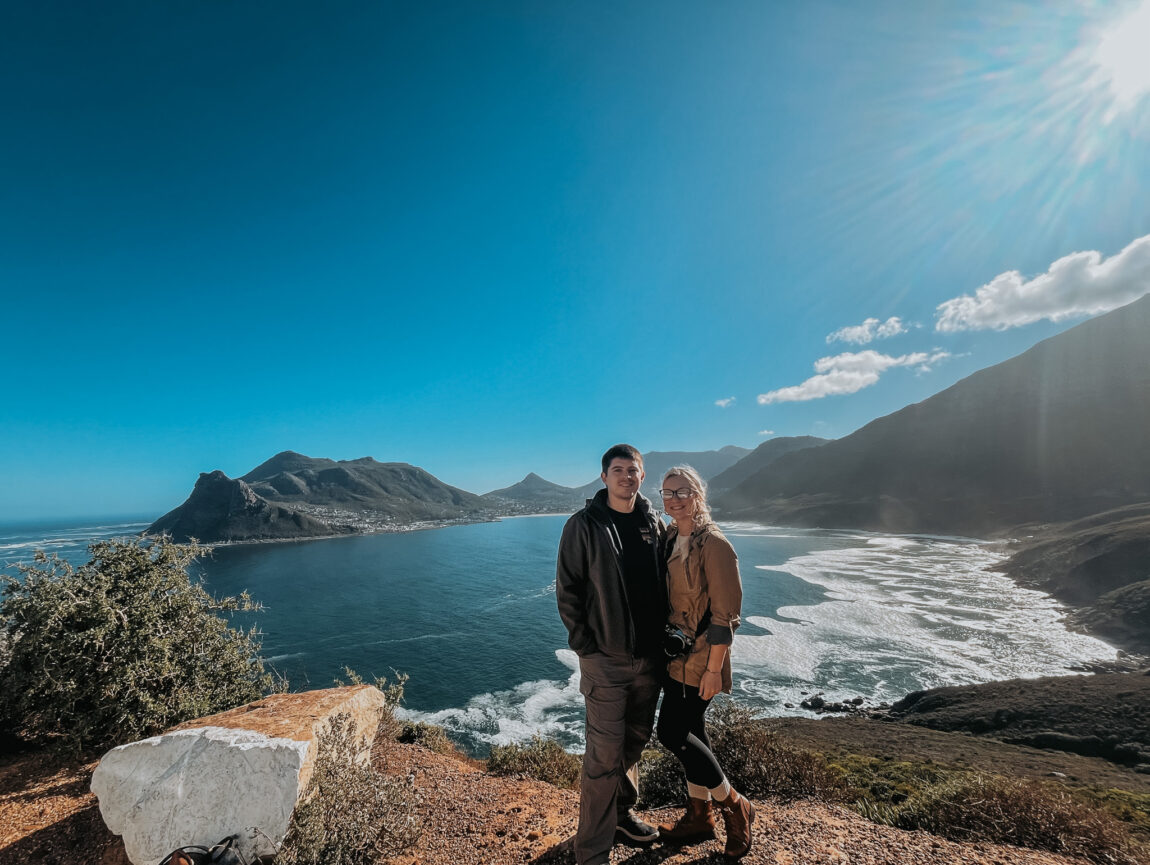
3 Days in Cape Town (+Itinerary & Travel Guide)
Cape Town, South Africa’s “Mother City,” is a vibrant destination that offers something for everyone. From breathtaking hikes up Table Mountain and pristine beaches like Camps Bay to world-class shopping at the V&A Waterfront, fine dining experiences, and exquisite wine tastings in nearby vineyards, Cape Town caters to all interests. Steeped in rich history and culture, including poignant sites from the apartheid era, the city invites you to explore its diverse heritage. Whether you’re an adventure seeker, a foodie, or a culture enthusiast, Cape Town’s multifaceted attractions promise an unforgettable experience. In this post, I’ll go over how to best spend your 3 days in Cape Town (+Itinerary & Travel Guide)!
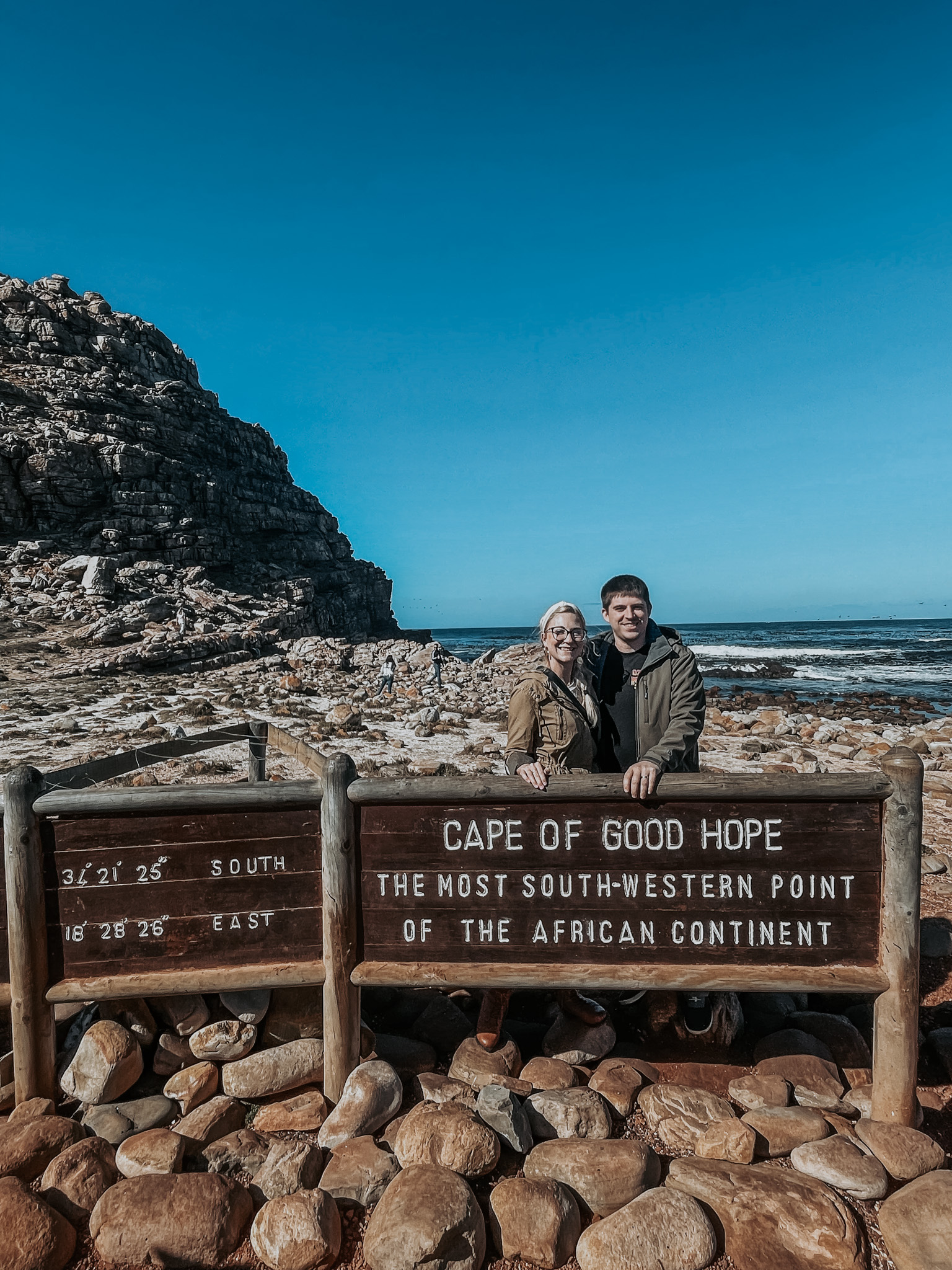
Getting To Cape Town
Air Travel
Cape Town International Airport (CPT) is the primary airport in the city. Major airlines such as South African Airways, British Airways, Emirates, Qatar Airways, and Lufthansa operate regular flights to and from Cape Town. Direct flights are available from key global hubs, including London, Amsterdam, Dubai, Doha, Frankfurt, and New York. The airport is located approximately 20 kilometers (12 miles) from the city center, and various transportation options, such as taxis, shuttle services, and car rentals, are available for a smooth onward journey.
Land Travel
For those preferring to travel by road, Cape Town is well-connected to other South African cities via the national highway network. The N1 highway links Cape Town to Johannesburg and Bloemfontein, while the N2 connects it to Durban and the picturesque Garden Route. Long-distance bus services, such as Greyhound and Intercape, offer comfortable and affordable travel options.
Johannesburg
- Distance: Approximately 1,400 km (870 miles)
- Driving Time: Around 14-15 hours
Durban
- Distance: Approximately 1,600 km (995 miles)
- Driving Time: Around 16-17 hours
Port Elizabeth
- Distance: Approximately 750 km (465 miles)
- Driving Time: Around 8-9 hours
Bloemfontein
- Distance: Approximately 1,000 km (620 miles)
- Driving Time: Around 10-11 hours
Pretoria
- Distance: Approximately 1,460 km (907 miles)
- Driving Time: Around 15-16 hours
Sea Travel
Although less common, arriving by sea is also an option. Cape Town’s port regularly welcomes cruise ships from around the world, making it a unique and scenic way to reach the city. The port is located near the V&A Waterfront, providing easy access to the city’s attractions and accommodations.
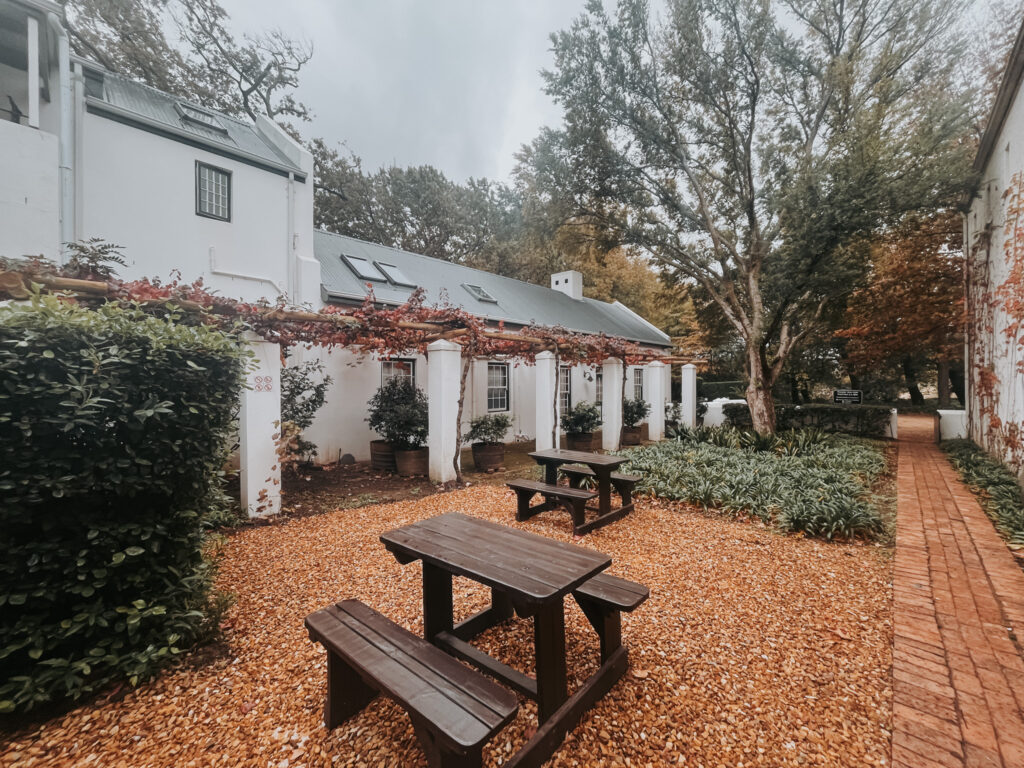
When To Visit
Seasons & Weather
Cape Town experiences a Mediterranean climate, characterized by warm, dry summers and cool, wet winters. Here’s an overview of the climate during different seasons:
- Summer (December to February):
- Temperature: Average highs range from 25°C to 30°C (77°F to 86°F).
- Weather: Sunny with little to no rainfall, perfect for outdoor activities such as beach visits, hiking, and exploring the city.
- Autumn (March to May):
- Temperature: Average highs range from 20°C to 25°C (68°F to 77°F).
- Weather: Mild and pleasant, with occasional light showers. Ideal for sightseeing, wine tasting, and outdoor adventures.
- Winter (June to August):
- Temperature: Average highs range from 15°C to 20°C (59°F to 68°F).
- Weather: Cool and rainy, especially in June and July. Winter is great for indoor activities like visiting museums, wine estates, and enjoying culinary experiences.
- Spring (September to November):
- Temperature: Average highs range from 18°C to 25°C (64°F to 77°F).
- Weather: Mild and sunny, with occasional windy days. Spring is ideal for outdoor activities, wildflower viewing in the Cape floral region, and visiting botanical gardens.
Best Time to Visit By Activity
- Beach Days, Hiking, and Outdoor Activities: Summer (December to February) offers warm weather and clear skies, making it ideal for beach days, hiking, and outdoor adventures.
- Wildlife Viewing: Winter (June to August) is excellent for whale watching in Hermanus and wildlife safaris in nearby reserves due to clearer visibility. This is when the brush is dried up, making animal spottings easier.
- Wine Tasting: Autumn (March to May) and spring (September to November) are perfect for exploring the Cape Winelands, with pleasant weather and picturesque vineyards.
- Cultural and Historical Exploration: Year-round, but spring and autumn are particularly comfortable for exploring museums, historical sites, and the vibrant neighborhoods of Cape Town.
Events & Festivals
Cape Town hosts a variety of events and festivals throughout the year, showcasing its rich cultural diversity and vibrant arts scene:
- January: Cape Town Minstrel Carnival (Kaapse Klopse), celebrating Cape Malay culture with colorful parades and music.
- February/March: Cape Town Pride, showcasing LGBTQ+ pride with parades, parties, and cultural events.
- March: Cape Town International Jazz Festival, one of the largest jazz festivals in Africa, attracting renowned artists from around the world.
- April: Two Oceans Marathon, a prestigious ultramarathon attracting runners globally.
- June: Knysna Oyster Festival, celebrating food, wine, and oysters in nearby Knysna.
- July: Bastille Festival in Franschhoek, celebrating French heritage with food, wine, and entertainment.
- August: Women’s Arts Festival, celebrating women in the arts with exhibitions, performances, and workshops.
- December: Festive Season Markets and Events, including Christmas markets, New Year’s Eve celebrations, and beach parties.
What We Did
We visited in early May and had a great experience! It wasn’t beach weather, but our main priority was our safari and animal spottings. Our days in Cape Town, we wore light jackets in the morning and short sleeves the rest of the day. It was rainy only one of our days there, but we spent this day winery hopping and it added to the ambience!
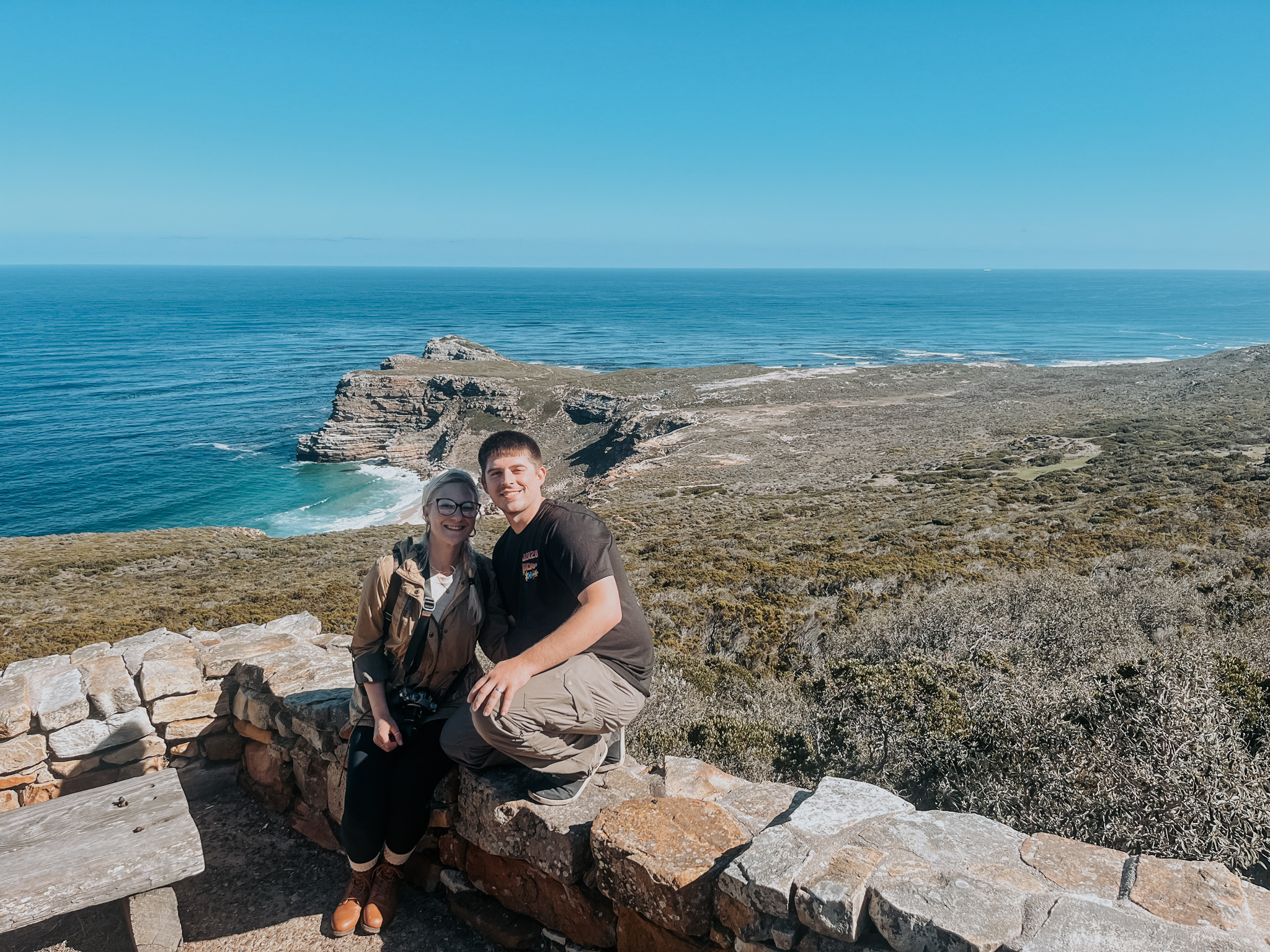
Getting Around Cape Town
Uber
Uber was what all locals, including our hotel concierege recommended using to get around Cape Town, so it’s all we used! It was super easy and cheap, and this is what I recommned using for your mode of transportation. We met a lot of fun drivers from the area, and it gave us a chance to ask for restaurant recommendations too! We even ubered all the way out to Franschhoek, which about an hr and a half from Cape Town, and it cost us $40 USD. Ubers are much cheaper in Cape Town than most areas in the US.
Car Rentals and Driving Tips
- Car Rentals: Numerous car rental agencies operate at Cape Town International Airport and throughout the city. Renting a car provides flexibility for exploring Cape Town and its surroundings.
- Driving Conditions: Roads in Cape Town are generally well-maintained, but traffic congestion can occur during peak hours. Driving is on the left-hand side of the road, and international visitors may require an International Driving Permit.
- Parking: Paid parking is available in most tourist areas and shopping centers. Street parking is metered, and restrictions vary. Always check signage to avoid fines.
Busy Bee Tip: We opted not to rent a car because of two reasons: 1- we are from America and drive on the right side of the road. We probably could’ve adapted, but honestly Uber was so cheap and easy, it wasn’t worth the hassle. 2- We heard a lot of safety concerns around renting a car/driving yourself around Cape Town. Car jackings are a common issue in Cape Town, especially in certain regions. If you’re not a local, and don’t know the best routes to avoid this, you could end up in some trouble. Uber drivers were very alert whenever we were stopped in traffic/at stoplights, and they know the routes to avoid too many issues.
Private Guide or Small Group Tour
Private Guide
Hiring a private guide offers personalized experiences tailored to your interests. Guides can provide insights into local culture, history, and hidden gems not often found in guidebooks. Most guides will plan itineraries for you based on best times to visit certain attractions, and will drive you wherever you need to go. Guides are very common in Cape Town, so you should be able to find one pretty easily. We didn’t end up using him, but Hank from Ulungele Tours was recommended to me by several people, as well as mentioned on many South Africa forums. I did message with him a bit and he was great to communicate with. I will link his info below.
- Ulungele Tours Email: bookings@ulungeletours.co.za
- Ulungele Tours Facebook
Small Group Tour
This is a great way to see a lot of tourist highlights in a day or two. We did a small group day tour one of days in Cape Town and had a blast. We went to Boulder Beach, Seal Island, Muizenberg Beach, drove Chapman’s Peak, saw the Cape of Good Hope, and more. The group we booked with only had 7 tourists total, so it wasn’t overwhelming, and our guide was super friendly! He even took pictures for us at all our stops. This is the exact tour we booked and enjoyed!
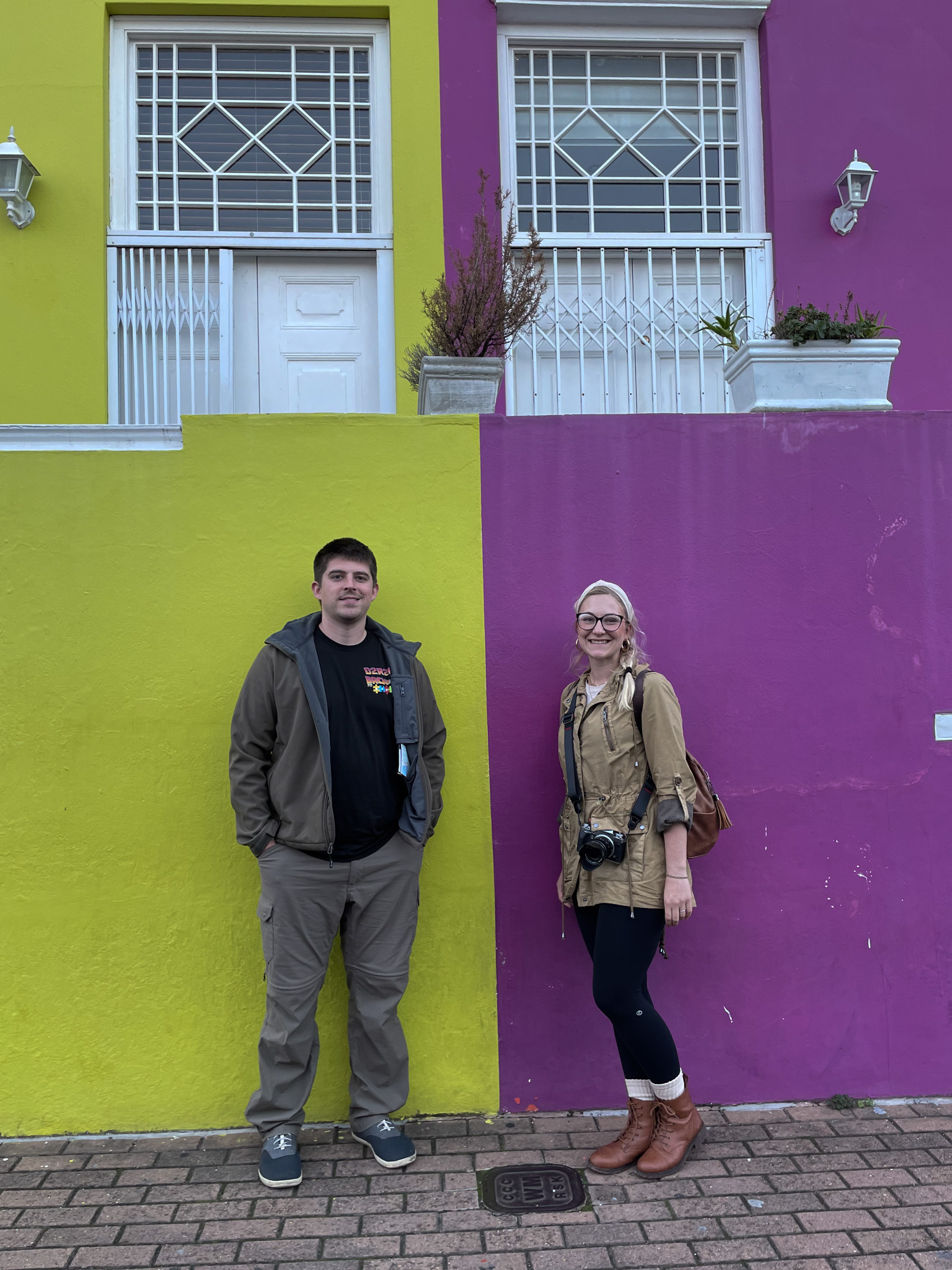
Where to Stay
Neighborhoods
Here’s an overview of popular areas to stay in Cape Town:
- City Bowl: Located at the foot of Table Mountain
- V&A Waterfront: Upscale waterfront area with luxury hotels, shopping malls, and fine dining restaurants.
- Camps Bay: Trendy beachfront neighborhood known for its palm-lined beach and vibrant nightlife.
- Sea Point: Coastal suburb with a bustling promenade, ideal for walking, jogging, and cycling.
- Constantia: Leafy suburb famous for its wine estates and lush gardens.
- Green Point: Vibrant neighborhood close to the V&A Waterfront and Green Point Park.
Busy Bee Tip: We decided to stay in the V&A Waterfront area of Cape Town. We picked this region because it’s the most touristy area, meaning it was safe, had easy access to restaurants, was good for hotel pickups for our day tours, and had a lot of hotel options.
Hotels
Budget
- City Lodge Hotel Victoria and Alfred Waterfront
- Area: V&A Waterfront
- Features: Affordable accommodation with comfortable rooms, close to shopping and dining at the waterfront.
- Mojo Hotel
- Area: Sea Point
- Features: Stylish budget hotel offering modern rooms and convenient access to the Sea Point promenade and beaches.
Mid-Range
- Fountains Hotel
- Area: City Bowl
- Features: Central location with spacious rooms, rooftop pool, and views of Table Mountain. Close to city attractions and nightlife.
- Protea Hotel by Marriott Cape Town Sea Point
- Area: Sea Point
- Features: Contemporary hotel with comfortable rooms, a rooftop pool, and easy access to Sea Point’s restaurants and promenade.
Luxury
- Labotessa Boutique Hotel
- Area: V&A Waterfront
- Features: A luxurious, boutique hotel with beautifully designed suites and exceptional concierege service.
We stayed at Labotessa, and honestly, it’s the best hotel we’ve ever been to. We usually stick to mid-range hotels when travelling, so staying here with such exceptional service and beautiful rooms, felt like a dream. The breakfast every morning was so fresh & yummy, and they serve it to you at their outdoor patio. We even had a suite where the elevator opened directly into our room. It was stunning and I highly recommend staying here. For more info, a full review, and photos, check out my Labotessa Hotel Review!
- One&Only Cape Town
- Area: V&A Waterfront
- Features: Luxury resort with elegant rooms and suites, private marina, spa, and several fine dining options. Overlooks Table Mountain and the waterfront.
- The Table Bay Hotel
- Area: V&A Waterfront
- Features: Iconic luxury hotel offering lavish rooms with harbor or mountain views, spa facilities, and proximity to V&A Waterfront attractions.
Busy Bee Tip: Definitely be sure to read reviews before booking. I was shocked at some reviews I read, even for places classified as luxury hotels.
Busy Bee Tip: Load-shedding is common in Cape Town. Some luxury hotels have generators to avoid dealing with this, but most hotels don’t. This means there will be periods of time during your stay, where your hotel won’t have power. This is something to keep in mind when searching. Our hotel had a generator, so we never experienced this issue.
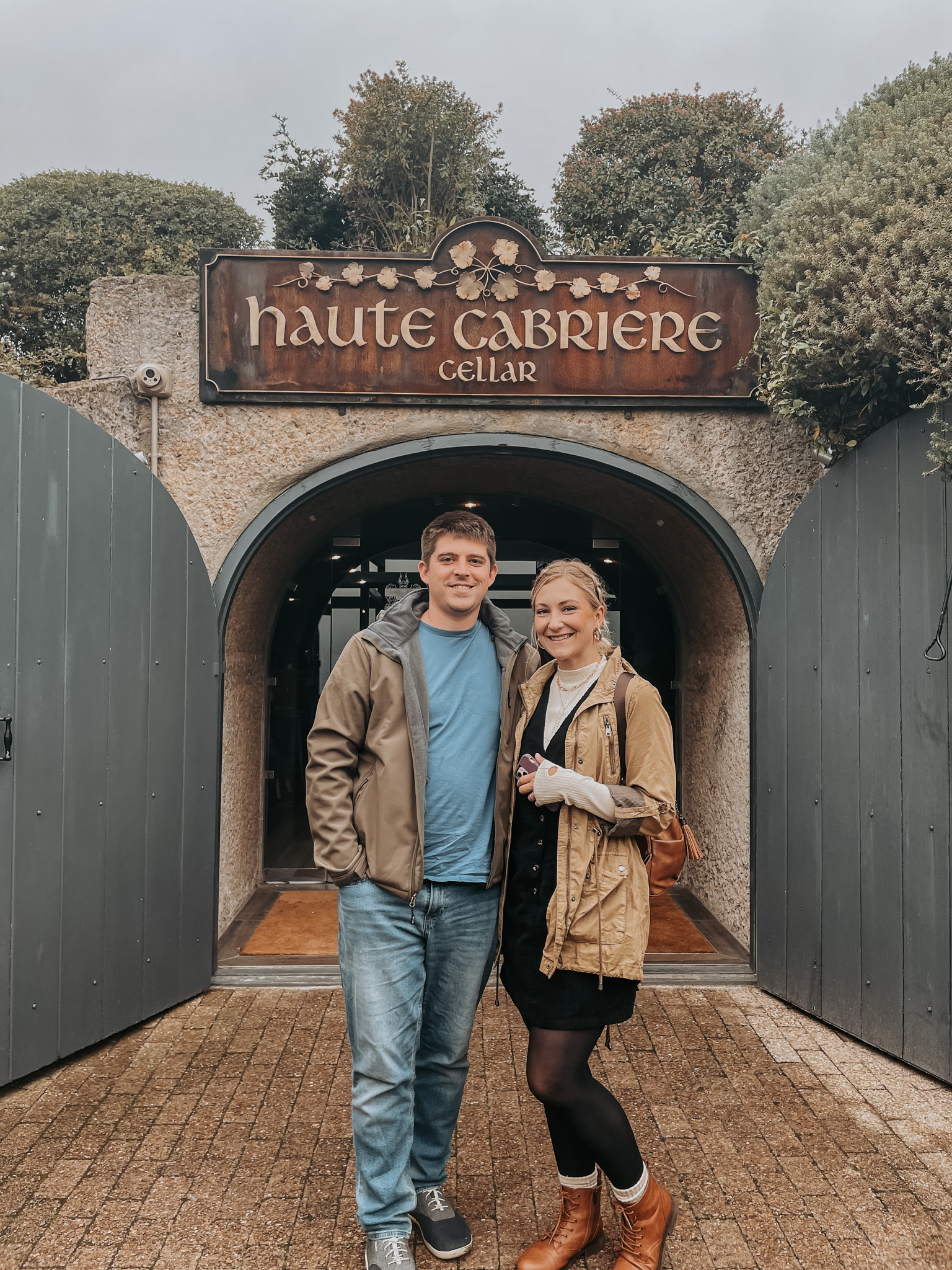
Things To Do
There is no shortage of things to do in Cape Town. I have a full post listing all the best things to do and helpful tips, so click here to read that!
Practical Information
Currency and Banking
- Currency: The official currency of South Africa is the South African Rand (ZAR). Major credit cards such as Visa and MasterCard are widely accepted in hotels, restaurants, and shops. I recommend travelling with a Visa, as that’s most widely accepted. We weren’t able to use our AMEX in a lot of places throughout Cape Town.
- ATMs: ATMs are readily available in Cape Town, especially in tourist areas, shopping malls, and at major banks. It’s advisable to use ATMs located within banks or well-lit areas for safety.
- Banking Services: Banks in Cape Town offer typical services such as currency exchange, international money transfers, and traveler’s cheques. Banking hours are generally from 9:00 AM to 3:30 PM on weekdays and 9:00 AM to 11:00 AM on Saturdays.
Language
- Languages Spoken: The main languages spoken in Cape Town are English, Afrikaans, and Xhosa. English is widely understood and spoken, especially in tourist areas and business establishments. During our week in South Africa, we didn’t encounter anyone who didn’t speak English!
Health and Safety
- Staying Safe: While Cape Town is generally safe for tourists, it’s important to be vigilant, especially in crowded areas and at night. Avoid displaying valuables openly and avoid walking anywhere at night, except the V&A Waterfront area. We were constantly advised to Uber once it was dark, even if it was a short distance.
- Health Precautions: Tap water in Cape Town is generally safe to drink, but bottled water is readily available if preferred. It’s advisable to have travel insurance that covers medical expenses in case of emergencies. You’ll also need to speak with your doctor about required vaccinations and medications prior to travelling to South Africa. For Cape Town, Malaria medication isn’t recommended, but if you’re travelling to other areas of South Africa, you’ll want to research this. Since we went on safari, we did need Malaria prevention meds. We were also advised to get the Typhoid Vaccine.
- Emergency Contacts: In case of emergencies, dial 10111 for police assistance, 10177 for medical emergencies, and 112 for any emergency services from mobile phones.
Visas and Entry Requirements
- Visa Requirements: Travelers from many countries, including the United States, Canada, and the European Union, do not require a visa for stays of up to 90 days for tourism purposes. However, visa requirements can vary, so it’s advisable to check with the South African embassy or consulate in your country before traveling.
Connectivity
- SIM Cards: SIM cards are available for purchase at Cape Town International Airport, as well as from various mobile network providers throughout the city. Options include Vodacom, MTN, Cell C, and Telkom. A valid passport and proof of accommodation may be required to purchase a SIM card.
- E-Sim Cards: This is what we used, so it was pre-arranged before our trip. This way we didn’t have to mess with anything when landing. We bought E-Sims through Airolo for a decent price. You can also check with your phone service provider, as some providers offer international phone plans.
- Wi-Fi Availability: Most hotels, restaurants, cafes, and shopping malls offer free Wi-Fi for customers. There are also numerous internet cafes and Wi-Fi hotspots in tourist areas.
- Staying Connected: Mobile coverage in Cape Town is generally good, especially in urban areas. International roaming services are available from major network providers, but it’s often more cost-effective to use a local SIM card for calls, texts, and data during your stay.
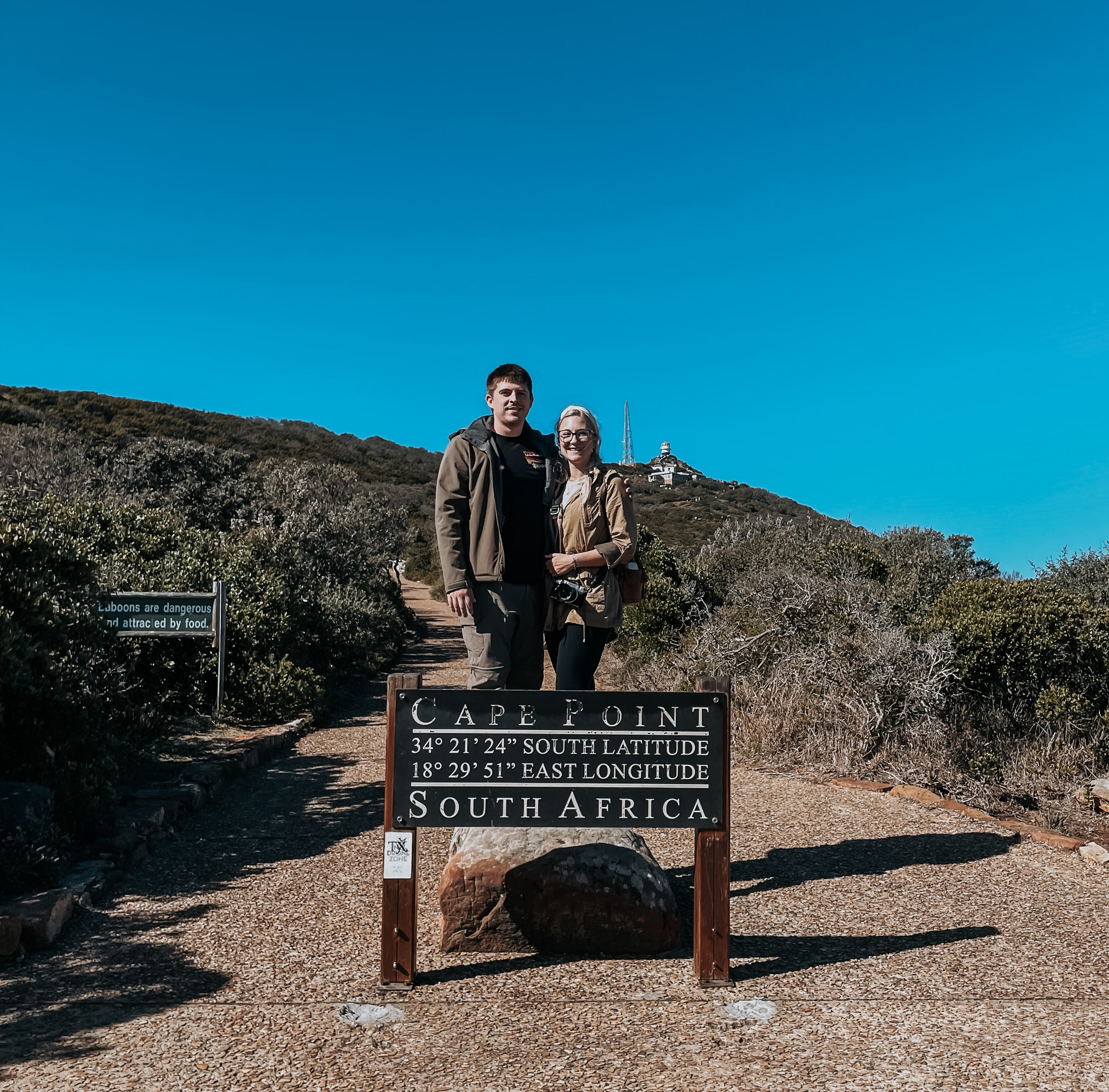
Local Etiquette
- Dress Code: While Cape Town is cosmopolitan, dressing modestly in religious or cultural sites is appreciated. Beachwear is acceptable at beaches but cover up when leaving the beach areas.
- Tipping: Tipping in South Africa is common. In restaurants, a tip of 10-15% of the bill is customary if service charge is not included. It’s also polite to tip hotel staff, taxi drivers, and tour guides if service is satisfactory.
3-Days in Cape Town Itinerary
This itinerary is almost an exact copy of our three days in Cape Town, but I’ve added in extra options incase you don’t want to do exactly what we did!
Day 1:
What you do & see this day depends a lot on your arrival time & level of jet-leg. We arrived around 5 pm, after our 15 hour flight so we weren’t up for anything crazy.
- Arrive in Cape Town
- Obtain a Sim Card at the airport if you didn’t prepurchase an E-Sim.
- Uber to your hotel and check in to drop of luggage.
- Visit V&A Waterfront District – This is how we spent our first evening in Cape Town. It’s the only area in Cape Town where walking around at night is recommended, and there’s lots to see and do to fill your time.
- Wander the shopping mall
- Grab a bite at a waterfront restaurant or bar
- Take a sunset boat ride or boat tour
- Visit the Two Oceans Aquarium
- Ride the Cape Wheel
- Rent a bicycle or go for a leisurely stroll along the waterfront promenade, lined with cafes, sculptures, and scenic views.
- Join guided walking tours or Segway tours to explore the V&A Waterfront area and its hidden gems.
Day 2:
Option 1: Visit the Winelands
- Franschhoek, Stellenbosch, and Constantia are the popular winelands near Cape Town. Each offer a different selection of wineries and vibes. We opted to spend the day Ubering between wineries in Franschhoek and had a BLAST. Wine tastings are much cheaper in South Africa than the US as well. Each tasting cost us around $4 and some even included maccaroon pairings or chocolate pairings.
- You can do this a variety of ways: Uber (this was our pick and it worked perfectly!), Small Group Tour, or Private Guide.
- For a private guide I recommend speaking with Hank from Ulungele Tours.
- We opted to Uber to Franschhoek and then Ubered between wineries and it was affordable and easy. This was best for us because we could be flexible. Since we arrived the day before, we weren’t sure how early we’d be willing to leave and how long we’d want to be out. It also allowed us to pick wineries on a whim, based on local recommendations.
- Below I’ve linked a few highly rated small group tours if you prefer this option!

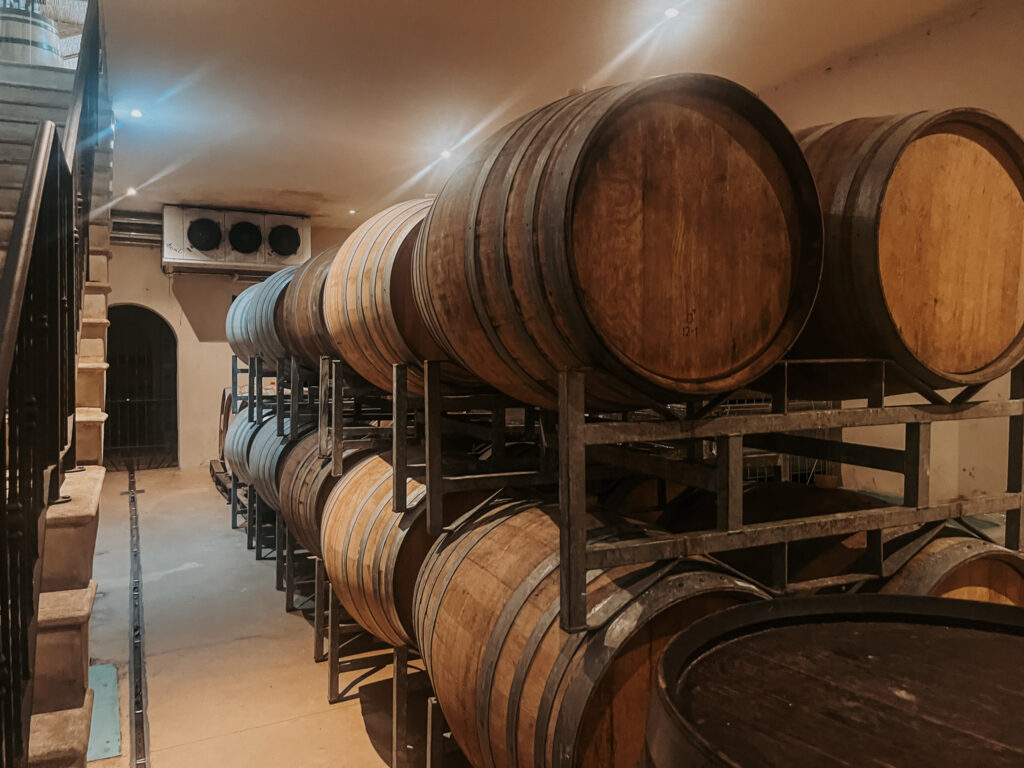
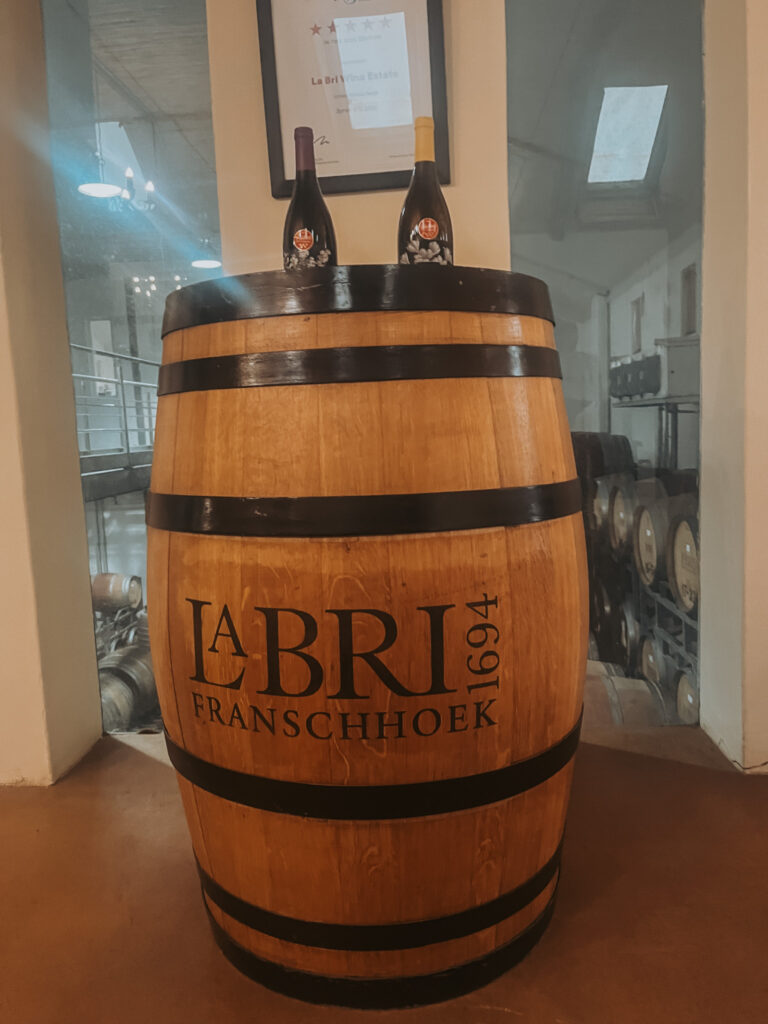
Option Two: Visit Table Mountain
- Cable Car: The Table Mountain Aerial Cableway operates daily, weather permitting. The base station is located at Tafelberg Road, off Kloof Nek Road. It’s advisable to check the weather and operational status on their official website before heading there.
- Hiking: For hiking enthusiasts, several trails lead to the summit of Table Mountain, including Platteklip Gorge, India Venster, and Skeleton Gorge. These routes vary in difficulty and offer rewarding views along the way.
- Highlights: Panoramic views of Cape Town, Atlantic seaboard, and diverse flora.
- Tips: Start early to avoid crowds and check weather conditions. Cable car available for descent (weather permitting).
- Safety: Always hike with a companion or group, and let someone know your itinerary. Carry sufficient water, wear sturdy shoes, and be aware of wildlife.
- Accessibility: The cable car is wheelchair accessible. For hikers, trails vary in difficulty and may require a moderate level of fitness.
- Guided Tours: Consider joining guided hikes for safety, local insights, and to learn about flora, fauna, and historical landmarks.
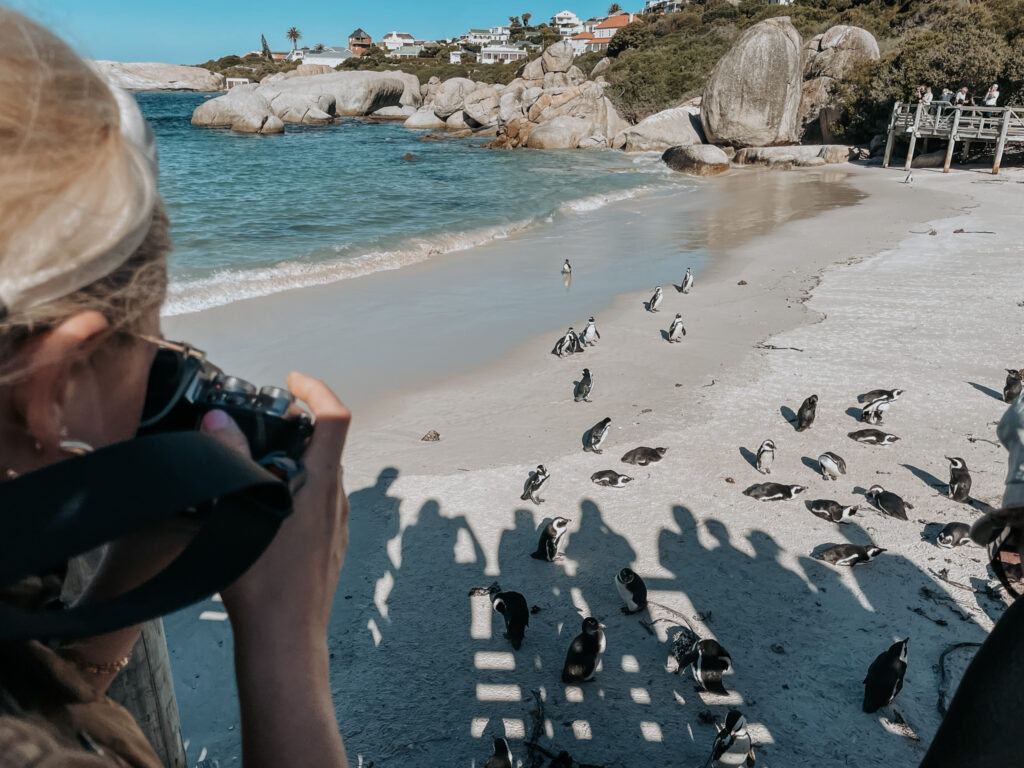
Day 3:
- Small Group Tour Around Cape Town
- This is a GREAT way to see a lot of tourist highlights in a shorter amount of time. During our full day tour, we were able to see Bo-Kaap, Muizenberg Beach, Chapman’s Peak, Cape of Good Hope, Boulder Beach, and more. Plus we met tourists from other countries, which was fun! I’ve linked the exact tour we booked below. This tour does take up most of the day. We arrived back at our hotel around 630 pm, and we were exhausted. We actually ordered Uber Eats to our room for dinner and enjoyed our nice hotel. If you’re up to it, you could use your evening for a sunset cruise or dinner at a nice waterfront restaurant!
